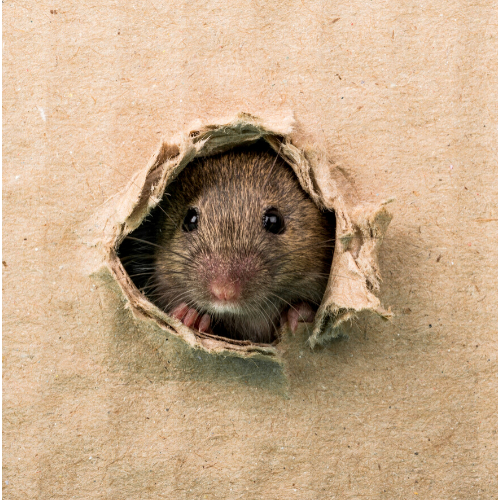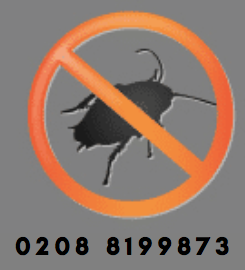Mice Control in Merton: Effective Strategies for a Rodent-Free Home
Introduction: Dealing with a mouse infestation can be a troublesome and unhygienic experience. Mice can cause property damage, contaminate food, and transmit diseases. However, with professional mice control services in Merton, you can effectively eliminate mice from your home and create a safe, clean living environment. In this article, we will explore the importance of mice control, common signs of infestation, and effective strategies offered in Merton.

Understanding the Importance of Mice Control: Mice are not just a nuisance; they can pose serious health risks to humans. They can contaminate surfaces and food with their urine, droppings, and hair, potentially transmitting diseases such as salmonella and hantavirus. Effective mice control is crucial to protect your family’s health, prevent property damage, and maintain a hygienic living space.
Recognizing Signs of Mice Infestation: Detecting a mice infestation early is key to effective control. Look out for the following signs:
- Gnaw marks: Mice have strong teeth and constantly gnaw on objects, leaving behind chewed-up wires, furniture, and packaging.
- Droppings: Mice leave small, pellet-shaped droppings in areas they frequent, such as along walls, in cabinets, or near food sources.
- Grease marks: Mice have oily fur that can leave smudges or grease marks along walls and baseboards as they navigate through your home.
- Nests: Mice build nests using materials like paper, fabric, and insulation. Look for shredded materials in hidden areas, such as behind appliances or in wall voids.
- Nocturnal activity: Mice are primarily active at night, so listen for scratching sounds or squeaks coming from walls, ceilings, or crawl spaces.
Professional Mice Control Solutions in Merton: Merton offers professional pest control services equipped with the expertise and tools to effectively eliminate mice from your home. Here are some strategies they may employ:
- Inspection and Assessment: Certified technicians will conduct a thorough inspection of your property to identify entry points, nesting sites, and the extent of the infestation. This assessment helps in developing a targeted treatment plan.
- Exclusion and Sealing: Sealing entry points is crucial to prevent mice from entering your home. Pest control professionals will identify and seal cracks, gaps, and openings in walls, foundations, and utility lines using materials like caulk, wire mesh, or weatherstripping.
- Trapping: Mice traps are an effective method for capturing and removing mice from your home. Pest control professionals will strategically place traps in areas of high activity and regularly monitor them to ensure the effective capture of mice.
- Baiting: Bait stations or traps with bait can be used to attract and eliminate mice. These baits are designed to be attractive to mice while ensuring the safety of children and pets. Pest control professionals will place and monitor bait stations to reduce the population of mice.
- Sanitation and Cleanup: Mice are attracted to food and shelter. Pest control professionals may provide guidance on proper sanitation practices to reduce food sources and eliminate potential nesting sites. They may also assist with cleaning up areas contaminated by mice droppings, urine, or nesting materials.
- Education and Prevention: Professional pest control services offer education on mice behavior, prevention techniques, and steps you can take to make your home less attractive to mice. This includes proper food storage, eliminating clutter, and maintaining good hygiene practices.
- Follow-up Visits and Monitoring: After the initial treatment, follow-up visits may be scheduled to evaluate the effectiveness of the treatment, address any remaining concerns, and make further adjustments if necessary
Frequently asked questions (FAQs) about mice control in Merton
- Q: How do I know if I have a mice infestation? A: Signs of a mice infestation include gnaw marks on wires and furniture, small droppings resembling pellets, grease marks along walls, nests made of shredded materials, and nocturnal scratching or squeaking sounds.
- Q: Are mice dangerous to my health? A: Yes, mice can pose health risks. They can contaminate surfaces and food with their urine, droppings, and hair, potentially transmitting diseases such as salmonella and hantavirus. It is important to address a mice infestation promptly.
- Q: Can I control a mice infestation on my own? A: While DIY methods may provide temporary relief, professional mice control is generally more effective for complete eradication. Mice are agile and can access hard-to-reach areas, requiring specialized knowledge and techniques to eliminate them effectively.
- Q: Are the treatments safe for my family and pets? A: Yes, professional pest control services prioritize the safety of your family and pets. They use approved methods and products, following strict guidelines to minimize any risks. It is important to follow the instructions provided by the technicians.
- Q: How long does a mice treatment take? A: The duration of a mice treatment depends on factors such as the severity of the infestation, the size of the property, and the treatment methods employed. Pest control professionals will provide you with an estimated timeframe based on your specific situation.
- Q: Will one treatment be enough to eliminate all the mice? A: In most cases, multiple treatments are necessary to effectively eliminate all the mice. This is because mice can reproduce rapidly, and some individuals may be hiding in inaccessible areas. Pest control professionals will develop a treatment plan that includes follow-up visits to ensure complete eradication.
- Q: How can I prepare my home for a mice treatment? A: Pest control professionals will provide you with specific instructions for preparing your home before the treatment. This may include removing clutter, sealing food containers, repairing any structural issues, and clearing potential nesting sites. Following these guidelines helps optimize the effectiveness of the treatment.
- Q: Can mice come back after the treatment? A: While a professional treatment significantly reduces the mouse population, it is possible for new mice to enter your home if preventive measures are not followed. Pest control professionals can provide guidance on how to prevent future infestations, including sealing entry points and maintaining good sanitation practices.
- Q: How soon can I expect results after the mice treatment? A: You should start noticing a reduction in mouse activity shortly after the treatment. However, complete eradication may take time, depending on the severity of the infestation and the treatment methods employed. Pest control professionals will guide you on what to expect.
- Q: What can I do to prevent future mice infestations? A: Preventive measures include sealing entry points, removing potential food sources, maintaining good sanitation, and reducing clutter. Pest control professionals can provide specific recommendations to make your home less attractive to mice and minimize the risk of future infestations.
If you have further questions or concerns about mice control in Merton, do not hesitate to reach out to professional pest control services. They will provide you with expert advice and tailored solutions to address your specific mice infestation.
Mouse Communities: Social Organization and Behavior
Mice are social animals that exhibit a complex social structure and cooperative behaviors within their communities. Understanding the dynamics of mouse communities can provide insights into their social organization, communication, reproduction, and survival strategies.
- Social Structure: Mouse communities are composed of multiple mice living together in a shared territory. Within these communities, a hierarchical social structure often exists. Dominant individuals establish themselves as leaders and have priority access to resources and mates.
- Communication: Communication plays a vital role in mouse communities. Mice communicate through a variety of signals, including vocalizations, body language, and chemical cues. Squeaking, ultrasonic vocalizations, and scent marking are examples of communication methods used to convey information about territory, mating, and potential threats.
- Division of Labor: Mice exhibit a division of labor within their communities. While there may not be specialized castes like in ants, different individuals perform various tasks to support the community’s needs. This division may include roles such as foraging for food, nest building, reproduction, and defense against predators.
- Nesting and Shelter: Mice communities establish nests to provide shelter and protection. Nests are typically constructed in concealed areas like wall voids, attics, or burrows. These nests offer a safe environment for breeding, raising offspring, and seeking refuge from potential dangers.
- Reproduction and Parental Care: Mice are prolific breeders, and their communities include both males and females. Mating occurs within the community, and females give birth to litters of several offspring. The mother mouse provides maternal care, nursing and grooming her young until they are old enough to become more independent.
- Social Hierarchy and Aggression: Mouse communities often have a social hierarchy, with dominant individuals exerting control over subordinate members. Dominant mice generally have priority access to food, nesting sites, and mates. Aggressive behaviors, such as chasing, biting, or territorial disputes, may occur within the community to establish and maintain social order.
- Foraging and Food Acquisition: Mice communities engage in collective foraging and food acquisition. They use their keen sense of smell and memory to locate food sources within their territory. Mice often establish trails and explore their environment to find available food, which may include seeds, grains, fruits, or other edible materials.
- Population Dynamics: Mouse communities can experience fluctuations in population size based on factors such as food availability, breeding success, and environmental conditions. Their reproductive capabilities, rapid maturation, and adaptability contribute to their ability to establish and sustain communities in various habitats.
Understanding the behavior and social dynamics of mouse communities is essential for effective mice control and management. Pest control professionals employ strategies that target the entire community, disrupt their nesting and breeding sites, and prevent re-infestation. By comprehending the communication patterns and behaviors within mouse communities, professionals can develop treatment plans that effectively address the specific challenges associated with mice infestations.
It is important to note that mice have ecological roles in natural ecosystems, and control measures should be implemented when their presence poses health risks or causes property damage. Professional pest control services can provide guidance on the most appropriate methods to address mouse infestations while considering ethical and environmentally conscious approaches.

